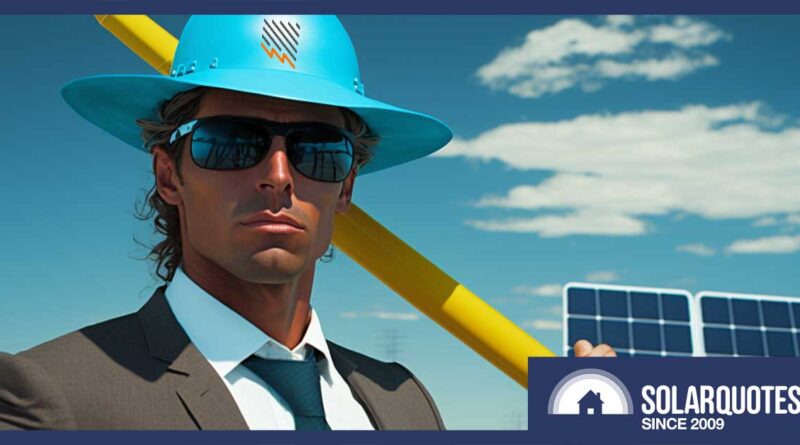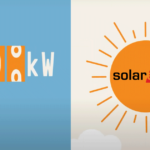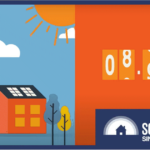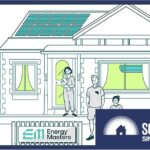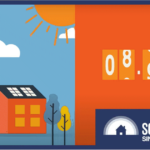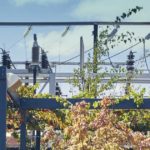South Australia Wields The Solar Shutdown Compliance Stick
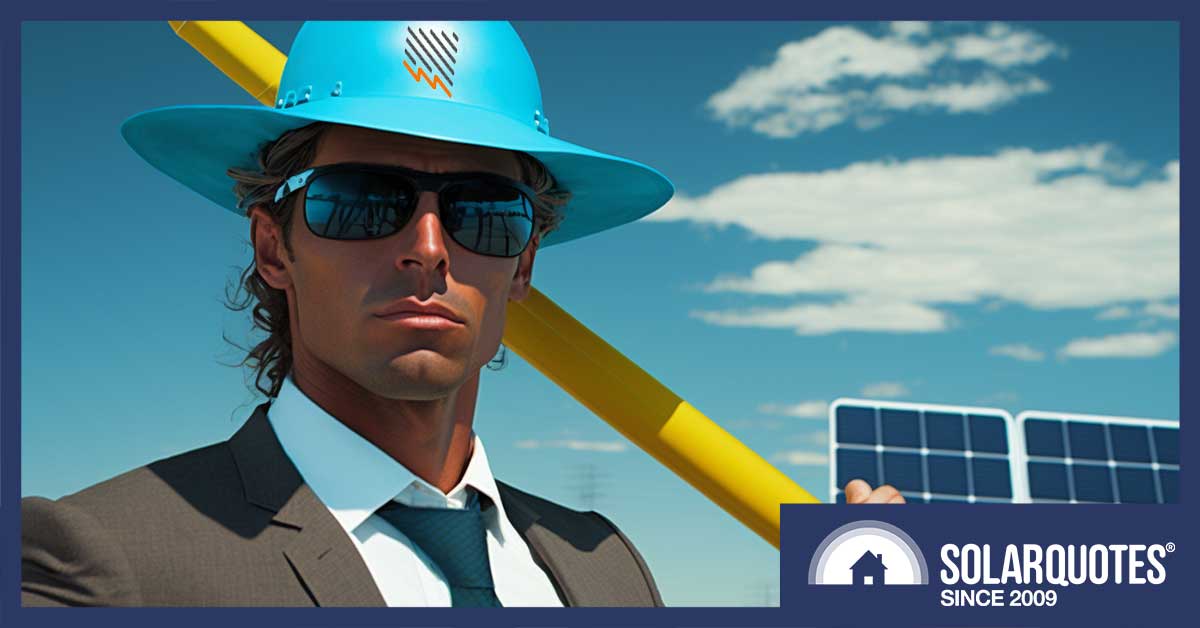
Are you *sure* you selected “Australia A” for Volt/Var response?
I recently received an invite from SA Power Networks to join them for a “free and informative webinar on the new automated feature for DER compliance management”.
You are probably thinking two things right now:
- “DER Compliance”? That sounds boring at batshit.
- Who cares about the inner workings of South Australia’s grid except for South Australian energy nerds?
But I recommend you read on wherever you’re from because this stuff is interesting, important, and coming to a renewables-heavy grid near you soon. And if we get it wrong, it will be a nightmare for the installers, the consumers and the electricity networks.
What The Hell Is ‘DER Compliance Management’?
Glad you asked. Here’s my Dummies’ Guide:
South Australia uses a lot of solar power and home batteries, known as distributed energy resources (DER). SA Power Networks (SAPN), the company responsible for distributing electricity in the region, wants to double the solar power capacity by 2025.
For this to happen, newly installed solar power systems need to be ‘smart’ and take directions from the electricity network operator: SAPN. Solar installers must ensure the systems they install follow SAPN’s DER compliance rules:
- Solar systems must be able to remotely turn on and off and adjust the power they export when SAPN send out the ‘Bat Signal’.
- If the home has opted into ‘Flexible Exports‘, the installer must register the equipment with SA Power Networks’ Flexible Exports program.
- Inverters must have the correct settings to maintain the quality of electricity. For example, they must adjust the power they generate in a specific way when the grid voltage gets too high – this is called ‘Volt/Var response’.
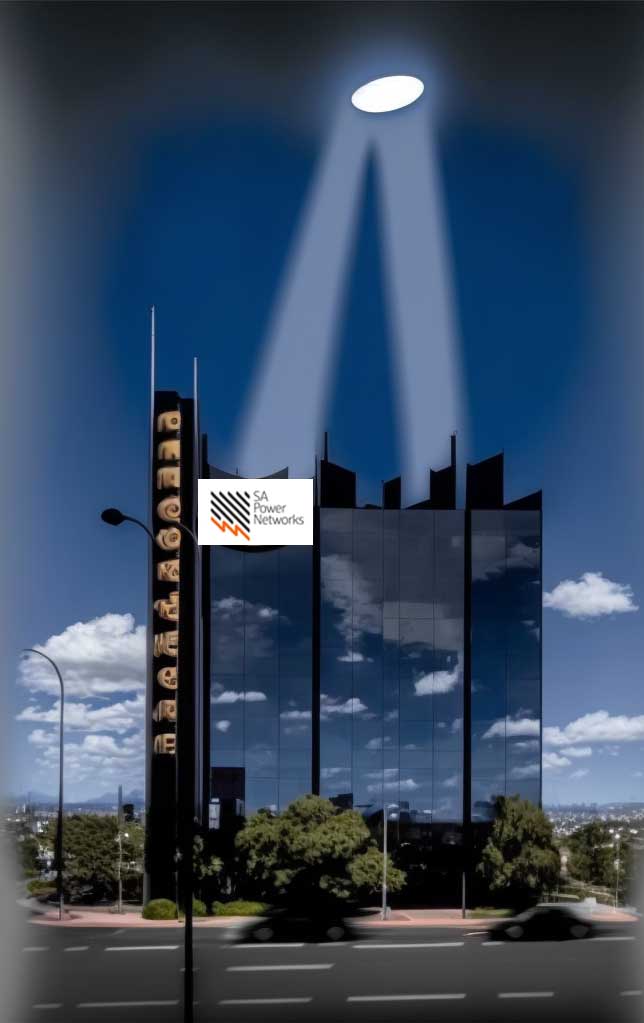
SAPN sending out the Bat Signal from 1 Anzac Hwy – asking South Australian solar inverters to stop exporting for a while.
SAPN is working with solar companies to ensure they follow these rules. They have a six-stage process to check compliance and use a traffic light system to show how well companies are doing. If a company doesn’t follow the rules, they could go into the sin bin.
SAPN’s Big Stick
SAPN told me that 90% of an installer’s work must be correctly connected and tested to prove DER compliance, otherwise they’ll be blocked from installing any more solar.
DER Compliance Management is a pain in the bum for installers. But it is about ensuring smart solar power systems communicate with the energy grid and follow the necessary standards to maintain a reliable and efficient electricity network. We need it in South Australia now. The rest of Australia will need it soon.
SA’s DER Compliance System Is Launching In May 2023
From May, SA Installers will have to use an online portal to both get permission to connect the solar system and check that it is DER compliant. The idea is that the compliance check is automated.
The process will mean that everyone has better visibility of what is connected and when it’s been finished. Reassuringly for me as an installer, there will be an ability to test the finished installation in real-time, to make sure that the inverter you’ve just commissioned will throttle off as required when the bat signal goes out.
And it seems we need a better compliance system because…
Current Compliance Is Not Great
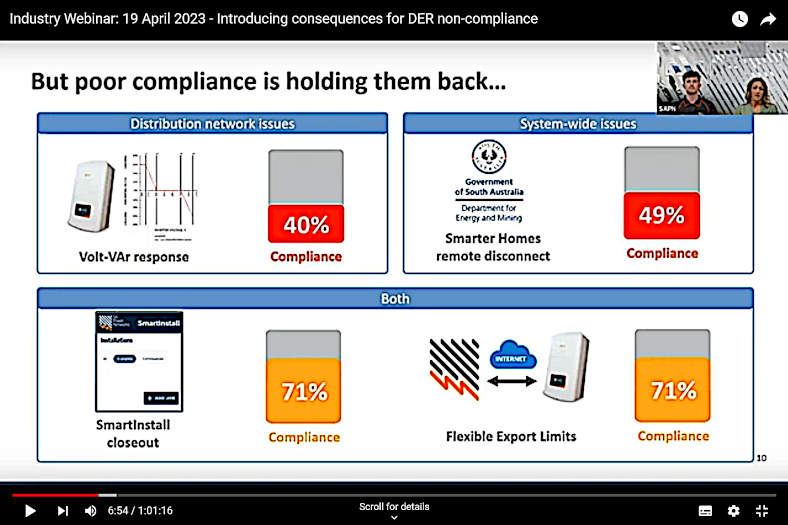
Program the settings? For Volt/VAR compliance, the inverter menu might simply require the installer to select the setting: “Australia A”, but here in SA it seems 60% of installers reckon “This beer isn’t going to drink itself…we’re off to the pub”.
Compliance is awful at the moment. Inputting the correct Volt/Var settings should be a 2-minute job, but it has only 40% compliance. With mandatory remote disconnect, more systems are being installed without it than with it.
Most solar installers want to do the right thing, but they have a lot to think about on install day. Automated compliance management is long overdue, and will help solar retailers and installers in South Australia make sure they’re doing the right thing.
But DER Compliance Is Usually Dependent On A Fragile Wi-Fi Connection
Even if we get all new systems 100% DER compliant on the install day, there remains a very fragile link.
As an installer, WiFi is the bane of my existence. Making the physical connections with wires and conduits is easy enough; they’re tangible things. When the hardware won’t connect to the internet, the signal is weak, the server isn’t responding, the configuration doesn’t load, or the commissioning app is stuck in a boot loop… it’s enough to make you go postal.
The thing is that we are now relying on that customer’s WiFi connection, reliable or not, for energy system security. To my mind, it’s fraught with danger because once a resident moves house, the real estate agent is lucky to give you the right set of door keys, let alone the right security key for the internet router… which the old resident likely took with them anyway. And for the new people, once Netflix is connected, they will chill, blissfully unaware that the solar on the roof is crying out for a deep and meaningful connection too.
It strikes me as daft that we have internet-connected retail meters in every switchboard, and as solar installers, we can’t have access to that statutorily reliable 4G link to the outside world.
Sadly since the “power of choice” market reforms handed metering to the electricity retailers, nobody wants any responsibility for them.
For now, though, we can rest assured that as South Australia continues to pioneer new heights of renewable generation, SAPN will have better control to keep the lights on, the electric blankets warm, and the fridges cold. Flexible exports will be introduced in the new financial year, which means SAPN will be less likely to knock solar systems out by forcing high voltages onto the network if and when we have another round of spring storms.
There is a catch for the solar industry, though, and you might say it stems from the legacy of a public bureaucracy. We’ll call it a monopoly operator attitude. For years and years, ETSA, (who became SAPN) were forcing solar companies to update names, produce rates notices for addresses & otherwise do the basic admin work to get the network records in order. If we didn’t do as they wished, we didn’t get the grid-connect approval or the new retail meter installed.
Now we have a situation where a solar retailer can apply for a solar grid-connection agreement but if the installation isn’t closed out by the installing electrician, the solar retail company can’t move forward with more work. It makes some sense for small operators or those with staff entirely in-house. However, a subcontract installer may find they have an inordinate amount of power by withholding the compliance work.
It’s a legality for your electrician to fill out an eCOC (Certificate Of Compliance) to certify that electrical work has been performed to the appropriate standard, and that’s undoubtedly part of electrical contracting. SAPN now effectively demands an extra layer of compliance that no one is being paid for. The details already lodged in the eCOC must be entered again via the DER compliance procedure.
The Upside Of Stricter DER Compliance
It’s not all bad news for solar retailers. Dodgy sales companies and half-arsed installers are going to find it more difficult.
This could be a stroke of genius.
The whole regime of accreditation & CPD points hasn’t stopped poor installations. If, however, the actual installers are slack with compliance, they’ll soon find they don’t have any work because the companies creating the work won’t be able to make a sale.
Is It Time For Inspections By The Electricity Network?
DER compliance checks are another admin task the network should arguably be doing. If there were a network inspector who verified the installation before it was energised, then not just the compliance but the workmanship would have to improve across the state.
I would support random audits, but a compulsory inspection would be another round of appointments and site visits, which will be paid for by the electricity user eventually. Does anyone have time for that when we should all just be installing more solar?
Original Source: https://www.solarquotes.com.au/blog/sa-der-compliance/

